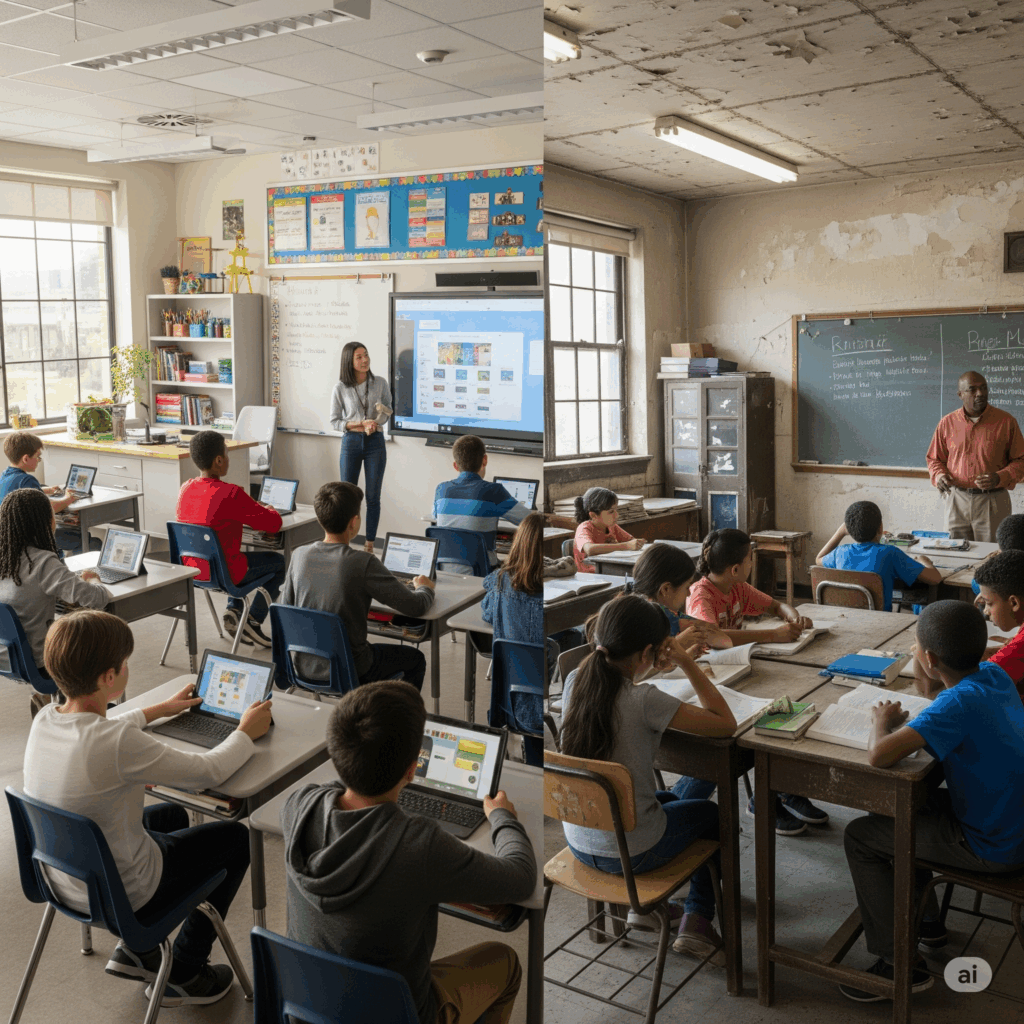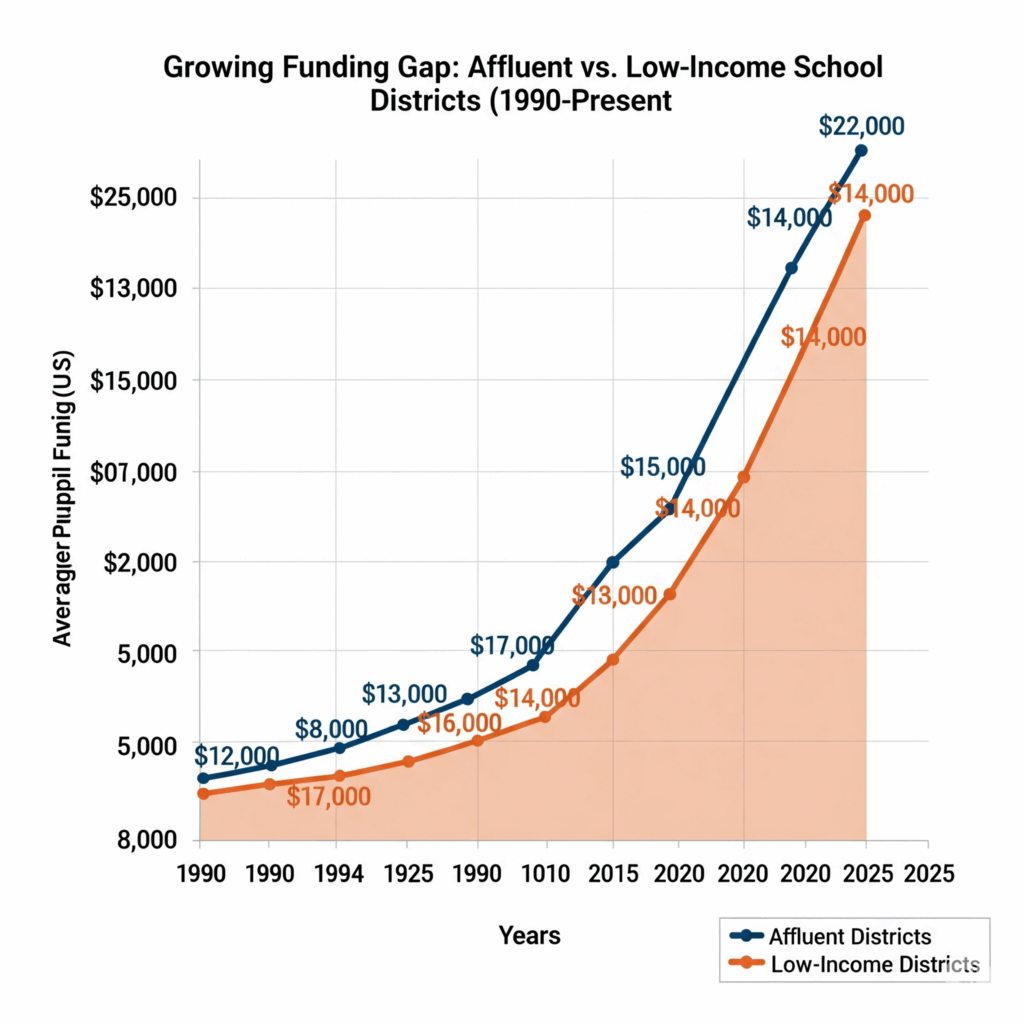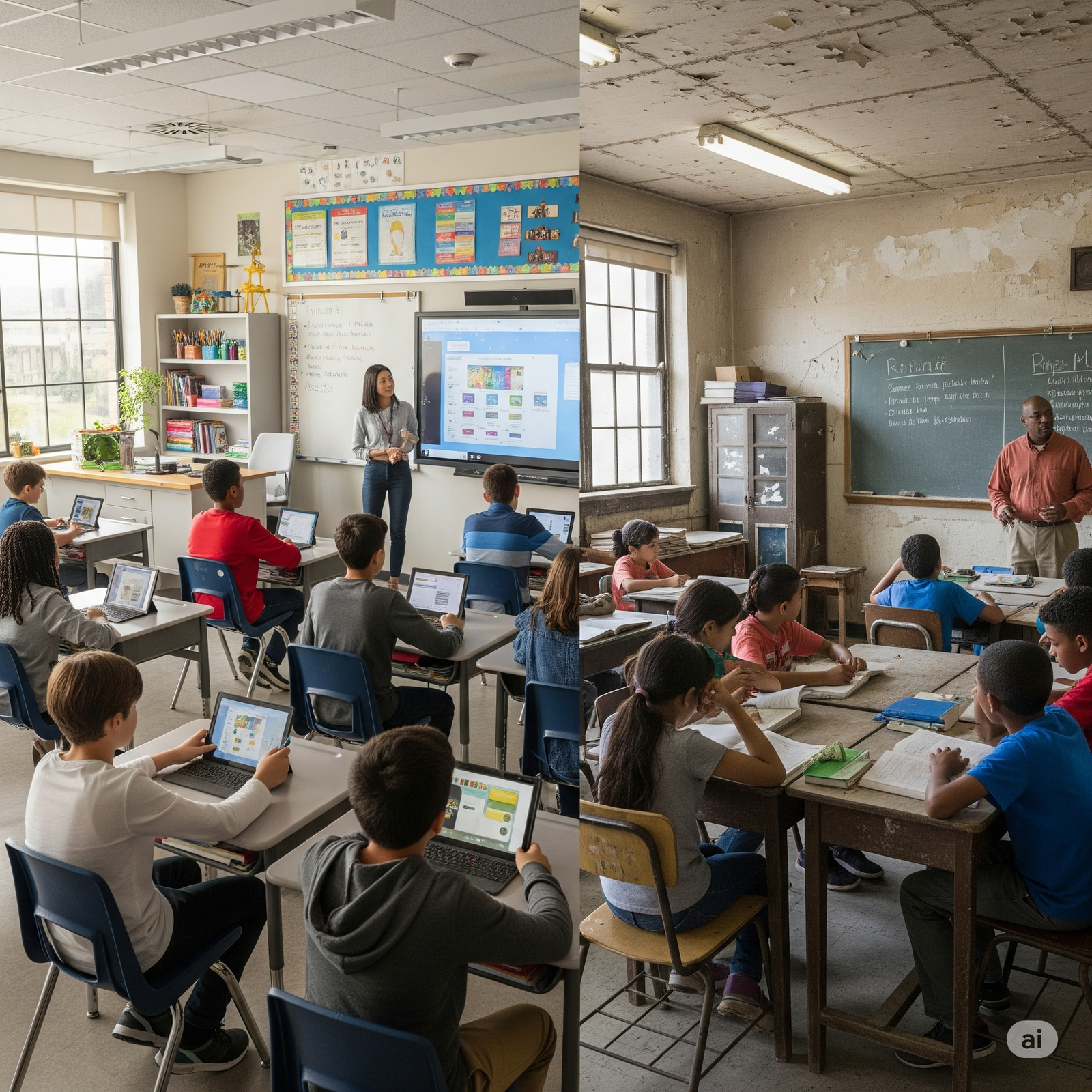The promise of a quality education, often touted as the bedrock of the American dream, is fundamentally undermined by a persistent and deeply rooted issue: financial inequity in K-12 schooling. Across the vast and diverse landscape of U.S. public education, a stark divide exists between resource-rich and resource-poor districts, leading to vastly different educational opportunities and, consequently, life outcomes for students. Bridging this divide is not merely an idealistic aspiration; it is an urgent imperative for a just and prosperous society.
At the heart of the problem lies the decentralized and largely property-tax-dependent funding structure for public schools. While states provide some level of funding, local property taxes typically form the largest portion of a school district’s budget. This system inherently disadvantages communities with lower property values, which often correlate with lower-income populations and a higher concentration of minority students. The result is a self-perpetuating cycle: underfunded schools in these areas struggle to attract and retain highly qualified teachers, offer robust curricula, provide adequate resources (from textbooks to technology), or maintain safe and stimulating learning environments. In contrast, wealthy districts, flush with property tax revenue, can invest in state-of-the-art facilities, specialized programs, advanced placement courses, smaller class sizes, and a plethora of extracurricular activities, giving their students a significant advantage.

The impact of this financial disparity is profound and multifaceted. Students in under-resourced schools often face larger class sizes, leading to less individualized attention from teachers. They may lack access to up-to-date textbooks, reliable internet, and essential technology, putting them at a disadvantage in an increasingly digital world. Specialized programs for students with learning disabilities, gifted students, or those needing English language support are often limited or nonexistent. Furthermore, these schools frequently struggle with teacher turnover, as highly effective educators are drawn to districts offering better salaries, benefits, and working conditions. This instability further disrupts the learning environment and creates a perpetual challenge for school improvement.
Beyond the academic implications, financial inequity in schools exacerbates existing social and economic inequalities. Children from low-income families, who often attend these underfunded schools, are denied the very tools that could help them break cycles of poverty. They are less likely to attend college, secure high-paying jobs, and ultimately achieve upward mobility. This perpetuates a system where socioeconomic status at birth largely dictates educational opportunity, rather than merit or potential. The “zip code lottery” effectively determines a child’s educational destiny, undermining the fundamental American principle of equal opportunity.

Addressing this complex issue requires a multi-pronged approach that tackles both the symptoms and the root causes of financial inequity. One crucial area for reform lies in state funding formulas. Many states have made efforts to create more equitable formulas, often through equalization aid designed to supplement funding in poorer districts. However, these efforts are often insufficient, and the formulas themselves can be complex and subject to political influence. States need to move towards truly progressive funding models that genuinely prioritize the needs of high-poverty districts, ensuring a baseline of adequate resources for every student, regardless of their zip code. This could involve increasing state contributions to school funding, implementing weighted student funding formulas that allocate more resources to students with greater needs (e.g., those from low-income families, English language learners, or students with disabilities), and establishing robust oversight to ensure funds are used effectively.
Beyond state-level reforms, there is a critical need for federal involvement. While education is primarily a state and local responsibility, the federal government plays a vital role in ensuring civil rights and promoting national equity. Federal programs like Title I, which provides financial assistance to schools with high percentages of low-income students, are essential but often underfunded. Increasing federal investment in these programs and streamlining their implementation can significantly boost resources for the most vulnerable schools. Furthermore, the federal government could incentivize states to adopt more equitable funding practices through grants and matching funds.
Another key component of bridging the divide involves addressing the underlying issue of property tax reliance. This is a politically sensitive area, but discussions around alternative revenue sources or more equitable distribution of property tax revenues across regions are necessary. Some states have explored regional tax-sharing agreements, where a portion of property tax revenue is pooled and redistributed, offering a potential model for broader adoption. However, such initiatives face significant political hurdles and require strong leadership and community buy-in.

Beyond funding mechanisms, addressing financial equity also entails investing in areas that disproportionately impact marginalized communities. This includes:
- Investing in Teacher Quality: Providing incentives for highly effective teachers to work in high-needs schools, offering competitive salaries and professional development opportunities, and creating supportive work environments are crucial for attracting and retaining talent.
- Expanding Access to Early Childhood Education: High-quality pre-kindergarten programs can significantly reduce achievement gaps before children even enter kindergarten, providing a stronger foundation for all students.
- Supporting Wraparound Services: Schools in high-poverty areas often serve students facing significant non-academic challenges, such as food insecurity, housing instability, and limited access to healthcare. Providing comprehensive wraparound services – including health clinics, mental health support, and community resource referrals – can address these barriers to learning.
- Promoting Diverse Curricula and Culturally Responsive Teaching: Ensuring that curricula reflect the diverse backgrounds of students and that teaching practices are culturally responsive can enhance student engagement and academic outcomes, particularly for students from minority backgrounds.
- Investing in Technology and Infrastructure: Bridging the digital divide requires ensuring that all students have access to reliable internet and appropriate technology, both at school and at home. Modernizing school facilities in under-resourced districts is also essential for creating conducive learning environments.
Finally, and perhaps most importantly, bridging the divide requires a fundamental shift in mindset and a collective commitment from policymakers, educators, parents, and communities. It requires acknowledging that financial inequity in education is not just an unfortunate reality but a moral failing that harms individuals and society as a whole. It demands a recognition that investing in equitable education is not merely an expense, but an investment in our collective future – fostering innovation, reducing crime, improving public health, and strengthening our democratic institutions.
The challenges are formidable, but the potential rewards are immense. By dismantling the financial barriers that currently limit opportunities for millions of students, the U.S. can move closer to realizing its promise of providing a quality education for all, where every child, regardless of their background or zip code, has the chance to reach their full potential and contribute to a more just and equitable society. Bridging this divide is not just about fairness; it is about building a stronger, more resilient, and truly prosperous nation.










